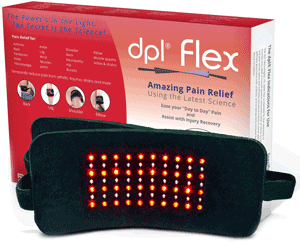I say turmeric is delicious in food when in fact, I cook and eat some of the blandest food imaginable. I only consume any turmeric at all when my dear girlfriend makes an Indian dish. But some say they use turmeric for acne and get good results, so let’s put it to the test.
And as recent scientific evidence has also linked turmeric to a decreased risk of many other diseases and conditions – everything from cancer to diabetes to asthma to eczema – it’s certainly worth a try.
Firstly, some facts about turmeric
Turmeric is a spice made from the turmeric plant, which grows mainly in southern Asia.
The bright yellow spice we all buy in the shops (well, I don’t personally, see above) is made by harvesting parts of the roots of the turmeric plant and drying them. These roots, which look a lot like fresh ginger, are then ground up to produce the spice.
As many of you curry-lovers will know, turmeric is incorporated into lots of Indian and other Asian food, where it adds flavor and color.
The interesting thing about turmeric is that it’s been used as part of traditional Indian medicine for something like 2,000 years.
The active ingredient in turmeric – the ingredient thought to possess these medicinal properties – is curcumin.
So what about using turmeric for acne?
Using turmeric for acne
The fact that a civilization has done something for two millennia is not enough for your sceptical old uncle Chris to accept it as proven. Humans also used to bore holes into the skulls of people with headaches, and use animal dung as ointment, so longevity is no guarantee of effectiveness.
When used as a topical treatment (it’s popular as a face mask) science has demonstrated some potential for turmeric to be:
- Anti-bacterial
- Anti-fungal
- Anti-inflammatory
And feasibly, all three properties could make it useful as an acne cure. In fact, this study demonstrated that curcumin was 36 times as potent as azelaic acid (a common active ingredient in acne creams).
However, it must be noted that all of these effects were produced in a test tube, and to date there is absolutely zero evidence that applying turmeric to the skin will have any benefits for acne.
What about eating it?
When taken as a foodstuff or a supplement, turmeric has been studied for its potential to reduce insulin in diabetics, with reasonable results. And what’s good for the diabetic is often good for the acne sufferer, because insulin is one of the most inflammatory acne hormones.
This study showed that turmeric might improve insulin resistance, a property which could lower inflammation and reduce acne breakouts as well.
However, once again we have a problem with the science, because almost all of the studies carried out into the health effects of turmeric and curcumin have been conducted on mice, usually using dosages which are far in excess of what the average human could stomach.
Imagine eating the equivalent of a pound of turmeric a day to treat your acne. Not likely.
It’s not all bad news though – according to this article researched and written for the BBC, incorporating turmeric into a variety of foods did produce a significant improvement in a gene marker linked with cancer, as well as asthma and eczema.
And interestingly, the same article demonstrates that this positive effect only occurred in those who ate the spice in food. Supplementing with turmeric, on the other hand, produced no effect.
The researchers are confident that it’s the turmeric as well – rather than anything else in the food – since it didn’t seem to matter what type of food the turmeric was added to.
Drawbacks to using turmeric for acne as a topical treatment
Even if we accept the shaky science about it being antibacterial… at the risk of stating the stupidly obvious, turmeric is yellow.
It’s not just yellow, it’s yellow AF. Turmeric is so yellow it’s used as a dye to make other things yellow.
And that means that if you use it as a face mask, it will likely make your face yellow. And when you wash that facemask off again, it will make your washbasin yellow. And when you pat yourself dry, it will make your towels yellow.
See where I’m going with this?!
Aside from discoloring everything it comes into contact with, turmeric has another side effect which might make it unsuitable to use topically for acne.
While the science is contradictory, there is a reasonably body of evidence that turmeric can make the skin more susceptible to sun damage. And as I wrote about previously, sunburn can lead to acne breakouts for up to two weeks after the original burn.
I’m therefore inclined to give turmeric a thumbs-down as a topical acne treatment or a supplement, and a gladiator-style wavering sideways-thumb when taken in its natural form as part of a meal. If you happen to like turmeric, by all means carry on eating it with a renewed appreciation for it’s (possible) health and acne benefits.
If you’ve got any good or bad experiences using turmeric for acne, feel free to comment below.


